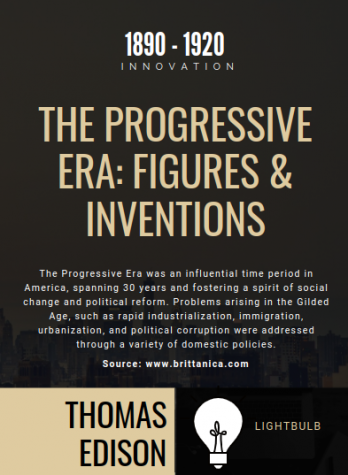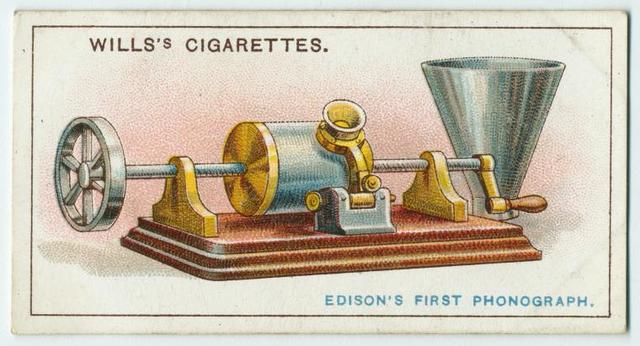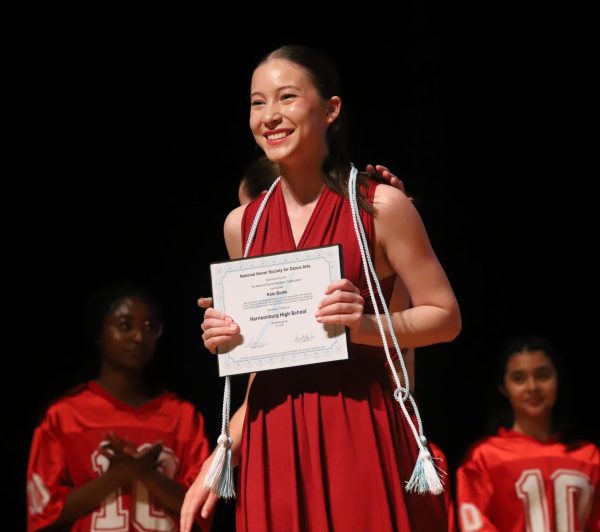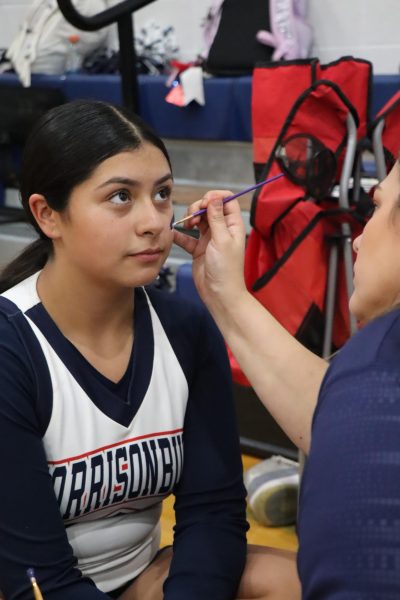Rooker purchases, begins restoring antique phonograph
Photo Courtesy of the New York Public Library
This is a drawing of Thomas Edison’s first phonograph. The design of the phonograph has since changed.
Junior Sam Rooker has a variety of scholastic interests outside of his normal schedule, one of which is history. Combining his love of history with science and technology, Rooker became interested in the Progressive Era and has since done extensive research about this period of history.
“I have been interested in the period for a long time. The 1890s to the 1920s was a time of great scientific advancement,” Rooker said. “During the period, there was a war inside America [about] which electrical current would power America for decades to come: [Thomas] Edison’s direct current or [Nikola] Tesla’s alternating current.”
Rooker’s fascination with the subject has inspired him to write a musical based on historical events between the two figures.
“Many people look back on Edison as corrupt, and they idolize Tesla. There are so many writers and historians who enjoy vilifying Edison and painting Tesla as a misunderstood genius,” Rooker said. “My main goal for the musical is to change some of the misconceptions surrounding Edison and his life.”


The musical, appropriately titled “Let There Be Light,” has required Rooker to spend ample time researching and writing to reflect the zeitgeist and events of the period.
“The musical has a distinct style, and it is narrated by a science teacher and a technology teacher [of this decade]. The first act follows Edison from his childhood to the invention of the lightbulb. The second act is mostly about the current [electrical current] war and features several great figures such as Nikola Tesla, Mark Twain, George Westinghouse and George Melies,” Rooker said. “It has been a great project to work on and has required a great deal of research. I’m about halfway done with writing the script, and I will start working on the score later this year.”
Rooker, a member of Tri-M Music Honor Society, found a way to combine his love of music and history with “Let There Be Light.” Also a longtime member of the Technology Student Association and its current president, Rooker needed a project to tie back into science and technology as well.
“My mom knows I’m a fan of Thomas Edison, so she sent me the link [for an antique phonograph] on the Green Valley Auction site, and I was immediately interested in the machine,” Rooker said. “I ended up buying the [phonograph] for $50, which, for it’s age and condition, was a pretty good deal.”
It isn’t just any phonograph, though. The phonograph Rooker purchased is an Edison Amberola 30, originally introduced in 1915 by Thomas Edison’s Blue Amberol Records. The 30 referred to its price at the time, which would now be worth about $770.
“The specific phonograph I purchased was produced at the Edison Production factory near his Lab in Orange County, New Jersey. The Amberola was one of the most popular models, and my model is in moderately good condition,” Rooker said. “It needs some major woodworking refinishing, but the mechanism inside is [in] complete and working condition.”
Rooker has begun the process of restoring the vintage phonograph by cleaning and taking apart the mechanism that makes the phonograph play.
“The work is coming along smoothly. I’m meeting with a clock repair expert soon to get a second opinion on how to restore the mechanism inside,” Rooker said. “I am also starting to work on putting the wooden case of the phonograph back together. It has fallen apart and some of the veneer on the case needs patching.”
Along with the phonograph, Rooker obtained more than 30 tubes, which play songs from the earliest days of the phonograph to wartime songs and comedy. Rooker explained how the tubes function to play music.
“The phonograph has several main parts. The case is the wooden box that surrounds the mechanism. The Edison Amberol tube has tiny grooves that are indentations which playback sounds using the reproducer,” Rooker said. “The reproducer is a mechanical device that reproduces sound using a diaphragm. The sound is then amplified through a metal bell.”
Prior to the phonograph, Rooker had never fully restored clockwork or any other type of antique electrical vessel.
“This will be my first time restoring an antique, but I have rebuilt and fixed other small machines before,” Rooker said. “This is all new to me, [but] I think restoring the mechanism inside the phonograph will be a fun challenge.”
Seeking guidance about restoring his phonograph, Rooker reached out to the Antique Phonograph Society and the Edison Phonograph Museum in Mount Pleasant, Texas.
“They have provided me with invaluable information about how to restore and repair certain [parts] of the phonograph,” Rooker said. “They are both fantastic organizations; I have enjoyed reading their pages and learning about the unknown history of the phonograph through their archives.”
With their help and his own research, Rooker is confident that he will have the mechanism functioning by the end of the year, even if the wooden stand requires more work. Then he plans to use the phonograph for projects in Tri-M, TSA and STEM.
“My goal is to get the machine working by the holidays so that I can play it for my family and possibly tour it around community centers for my work in the Music Honors Society,” Rooker said. “I will also be using it as my submission for the [TSA] Honors Society. One requirement for the program is to produce a project and present it, and the phonograph will be my submission. [I also plan to] display it at STEM fairs and TSA fairs in the future.”
Rooker looks forward to the completion of restoring his phonograph and working through its challenges.
“I have taken several STEM and engineering classes [that] have developed my passion for science and science history,” Rooker said. “My work in TSA has given me the resolve to continue this project even when it becomes difficult. TSA is everything that I love to do and I’m excited to make the phonograph a part of my work in the program.”
Your donation will support the student journalists of Harrisonburg High School. Your contribution will allow us to purchase equipment and cover our annual website hosting costs.












